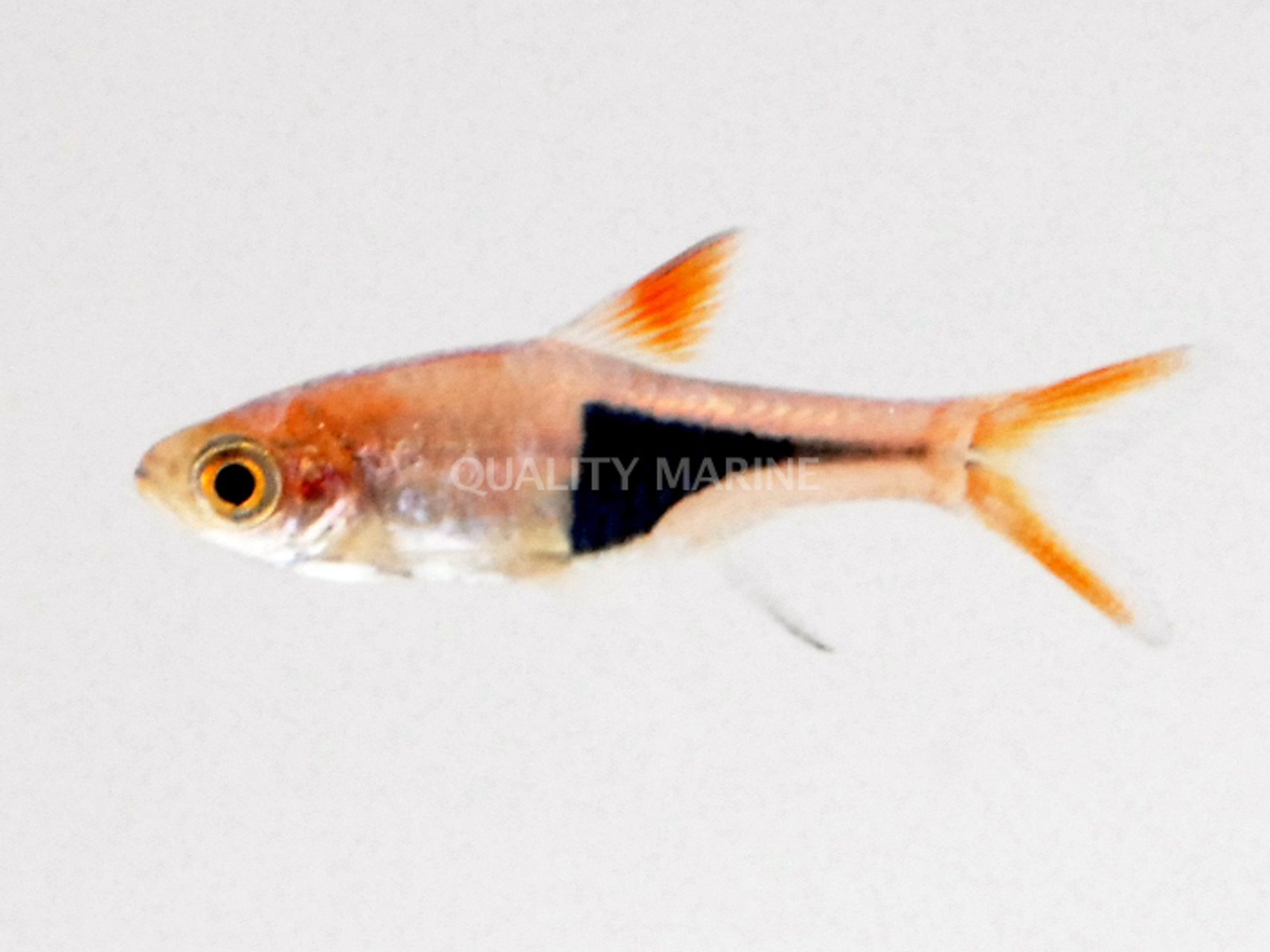Harlequin Rasbora Trigonostigma heteromorpha

The distinctive beauty of the Harlequin Rasbora (AKA the Porkchop Rasbora) has made it a familiar sight in aquarium stores since the earliest days of the hobby. This attractive and peaceful schooling fish is perfectly at home in most any community aquarium, rarely bothering other tank mates and lending a gorgeous coppery tone as it swims about.
It originates from Southeast Asia, with populations well-documented from peninsular Malaysia and Thailand (and perhaps nearby Sumatra), and can instantly be recognized thanks to the unmistakable black triangle present on the posterior half of the body, which contrasts against the cupreous hue of the body and fins.
Two other similar species occur less frequently in the aquarium trade. The Lambchop Rasbora (T. espei) originates from further north, in portions of Thailand, Cambodia and Vietnam, and has a smaller black marking along the sides of the body. The Glowlight Rasbora (T. hengeli) occurs to the south on the island of Borneo and also has a relatively small black marking, but it lacks the coppery coloration to the body found in its relatives. Finally, the rarely seen Trigonostigma somphongsi is thought to occur in parts of Western Thailand and is virtually absent from the aquarium trade and may even be extinct in the wild; it has just a thin black line.
The genus Trigonostigma was only recently created for this group, as they had previously been part of the superdiverse Rasbora, which you will still often see used in aquarium references. The name translates as “triangular marking”, beautifully describing their most noteworthy feature.
The natural habitat is said to be primarily slower sections of streams, often stained brown from decaying forest vegetation. These shady waterways typically contain dense beds of Cryptocoryne, which this small fish (maximum size is just over one inch) utilize for protection and breeding. In mature specimens, females grow a bit larger and have a fuller belly. Eggs are laid on vegetation and the young can be raised without too much effort aside from providing a suitably small food source (such as a commercial fry food). It is even possible for young to successfully develop without assistance in a densely planted aquarium.
This is a primarily carnivorous fish, which will benefit from regular feedings of frozen worms and crustaceans. To maximize the bright colors, a food high in color enhancing additives is recommended. Be sure to always keep a large group together, as this will also encourage these timid fishes to feel at ease and display most naturally. Some good tank mates would be other small barbs and rasboras from Southeast Asia, as well as the many loaches, gouramis, rice fishes and glass fishes native to the region. South American tetras and catfishes could also work well if appropriately chosen and a great many other fishes too.